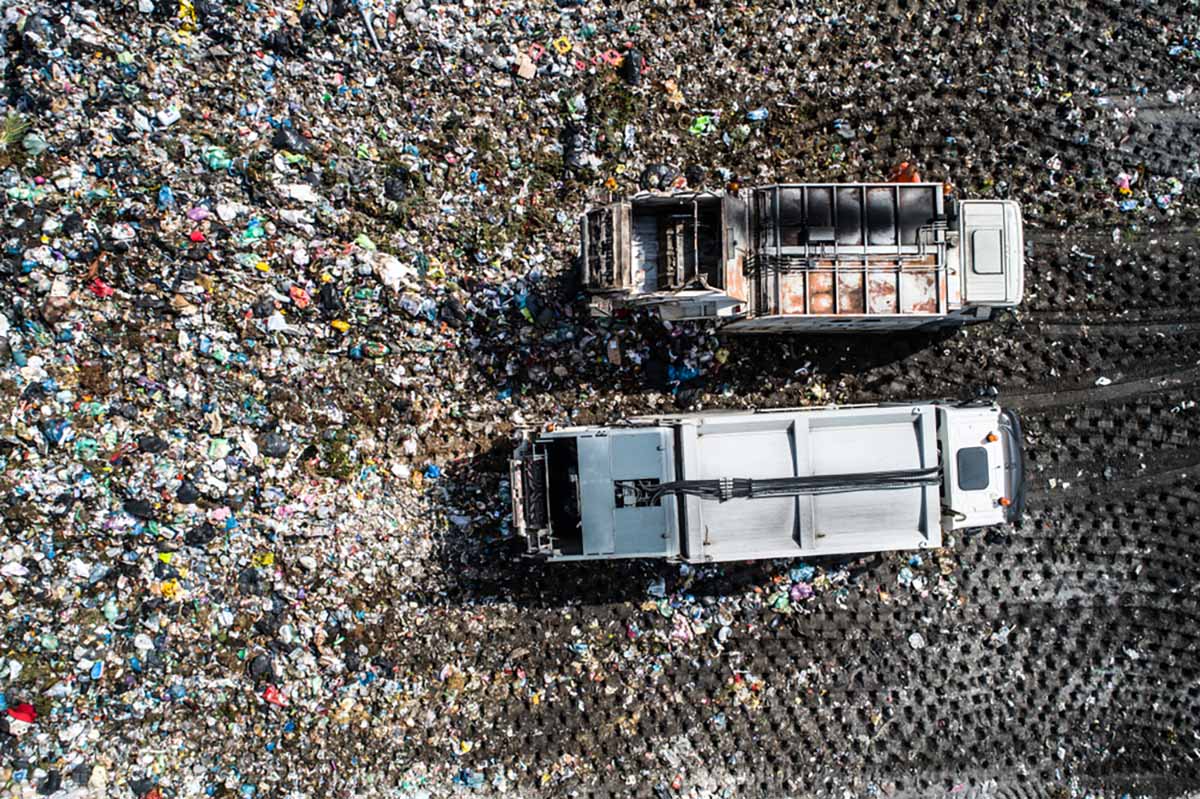
The study suggests over half of the 110 million metric tons of overall fiber that entered the waste stream went to landfill in 2019. | Janossy Gergely/Shutterstock
New research quantifies in greater detail the amount of fiber entering U.S. landfills each year. A lead author of the National Renewable Energy Laboratory (NREL) study said the findings highlight a huge opportunity for additional material recovery.
Published in December, the study from NREL’s Strategic Energy Analysis Center looks at how OCC, mixed paper and other fiber grades were disposed of in 2019. It found that of 110 million metric tons of overall fiber entering the waste stream, 56% was landfilled, 38% was recycled and the remaining 8% was burned.
The report is the latest in a series of studies from the U.S. Department of Energy-affiliated NREL analyzing landfill and recycling rates for various waste streams. Previous research found the amount of plastic discarded in the U.S. surpassed prior estimates.
Anelia Milbrandt, a senior research analyst at NREL and lead author of the new study, said a key goal of the research was to get more – and more detailed – data into the hands of local decision-makers.
“We really just wanted to improve the level of granularity,” Milbrandt said in an interview with Resource Recycling.
The study is focused on digging into the landfilled portion of the fiber to determine what grades are being disposed of and where in the country it’s being landfilled. But the recycling percentage may raise eyebrows in the recycling space, given the U.S. EPA regularly reports a far higher number for fiber recovery: 68% for all paper grades in 2018, the most recent year the agency reported waste figures. The American Forest & Paper Association (AF&PA) also reports higher rates more in line with the EPA calculation. Recovery rates – and the methodology used to calculate them – are an oft-debated subject in the fiber recovery space.
Milbrandt explained the NREL study uses the same figure as other reports for the amount of fiber recycled. The difference is in the amount of landfilled fiber, which Milbrandt’s study estimated at 62 million metric tons in 2019, compared to 16 million metric tons as reported by the EPA in 2018. As a result, the total waste generation figure assumed by NREL totaled 110 million metric tons, while that of EPA totals 61 million metric tons. So while both use the same recycling figure (42 million metric tons recycled in the year), the different denominator in the equation produces different percentages.
The authors explained their methodology for quantifying landfilled fiber in the study. The NREL study uses a “bottom-up method based on onsite [municipal solid waste] tonnage data and geographically specific waste composition values,” they wrote. Their studies involved reviewing 52 waste composition studies and using data from Waste Business Journal, which included data from 1,776 landfills accepting typical municipal solid waste materials.
The EPA, on the other hand, uses a “top-down method” to estimate landfilled fiber, the study explains, “based primarily on material balance data, along with other inputs such as product manufacturing data, product useful-life assumptions and product composition data.”
Of the commonly recycled grades, the NREL research found 18 million metric tons of OCC landfilled in 2019; 4 million metric tons of office paper, 3 million metric tons of newsprint and 3 million metric tons of magazines.
Compostable paper – identified as “food-soiled paper products such as paper towels, napkins, and pizza boxes” – made up by far the largest portion of landfilled fiber at 20 million metric tons. An “other” category – made up of anything that doesn’t fit neatly into a fiber grade, like books, cartons, photographs and more – came in at 14 million metric tons landfilled.
For recycling stakeholders, the findings that a larger share of fiber – particularly of OCC – is landfilled than is typically reported suggests an opportunity to increase capture. Milbrandt added that the data could also serve as a wake-up call for the economic opportunity presented by increasing fiber capture rates. Fiber grades have been increasing in value over the past year, with OCC trading at $80 per ton and mixed paper up to $38 per ton in December 2023.
“Not only are we throwing away valuable resources, we are paying for it in tipping fees,” Milbrandt said.
Just how valuable are the resources being discarded? MIlbrandt and her team put a $4 billion price tag on the amount of otherwise recoverable OCC and other paper grades that were tossed into landfills in 2019, using three-year averages for recovered commodity pricing. The researchers noted tipping fees to landfill that same material totaled almost the same amount, $4 billion, so capturing that material in the recycling stream would have been an $8 billion gain in 2019.